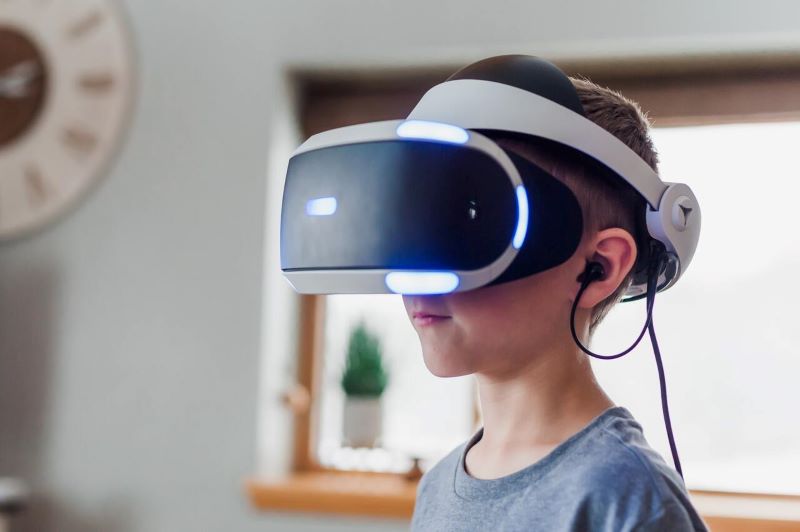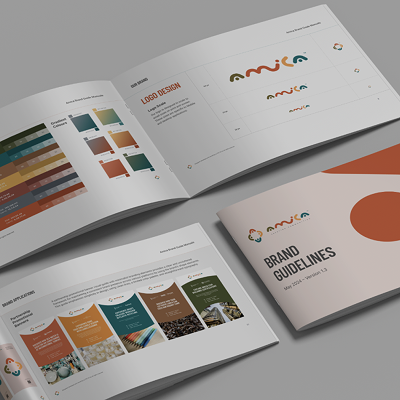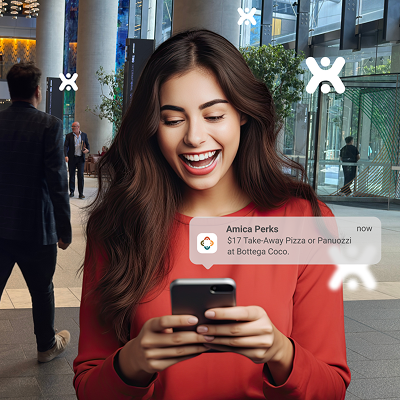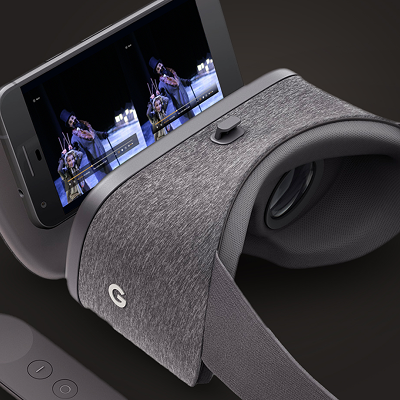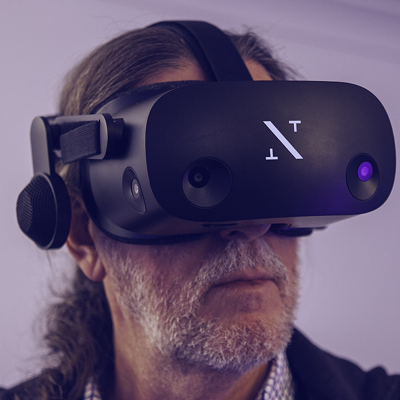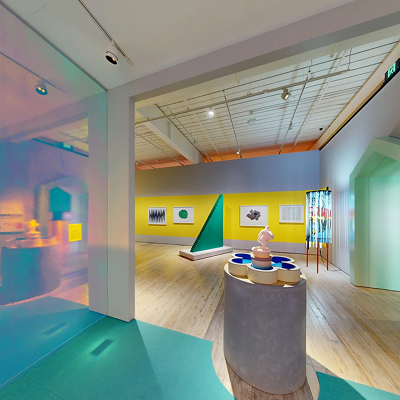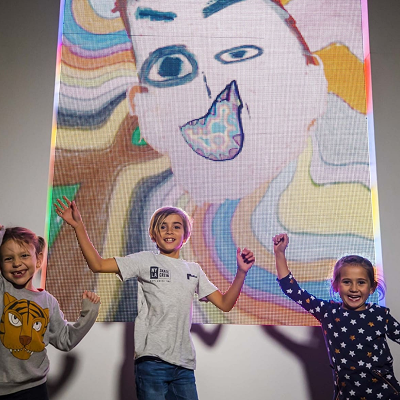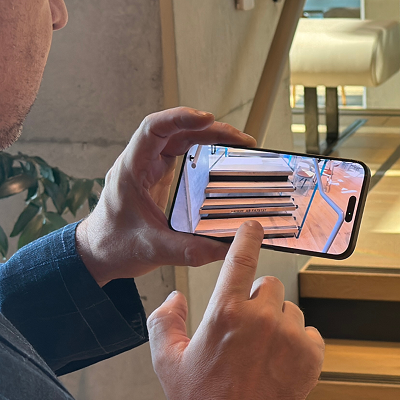In a world where technology affects every aspect of our lives, virtual reality is gaining traction in a wide variety of businesses. What was previously considered a rare luxury is now a widely available platform that offers immersive experiences to people of all ages.
As a teacher, I’m always looking for new ways to engage my students and enhance their learning experience. One technology that has really caught my attention is virtual reality (VR). In this article, I will explore how virtual reality can be used in the classroom and its potential impact on education.
We’ll look at what makes VR education so beneficial, how it can increase student wellbeing, and how augmented reality can be used in the classroom. Additionally, we will discuss how VR can be used in various areas of education and training.
What is Virtual Reality?
Before we begin, let us analyse what this phrase actually means. Virtual reality, shortened VR, is a computer-generated simulation that distorts the user’s perspective of reality and enables interaction with a three-dimensional environment that can be experienced through a headset or other devices.
Although your surroundings do not exist physically when wearing a VR headset, the experience is so immersive that it seems very much like they do. It creates a sense of immersion and presence, allowing the user to interact with the virtual world.
These false realities might be wholly abstract and comprised of implausible characteristics and surroundings, or they can be used to recreate an identical real-world experience, such as touring the Vatican or exploring your own neighbourhood via Google Earth. It’s unsurprising that something so powerful can be such an effective teaching tool.
When we think of virtual reality, it’s natural to envision something futuristic and technologically complex beyond our comprehension. However, it is now widely available throughout the world, with millions of individuals consuming it for recreational purposes on a regular basis.
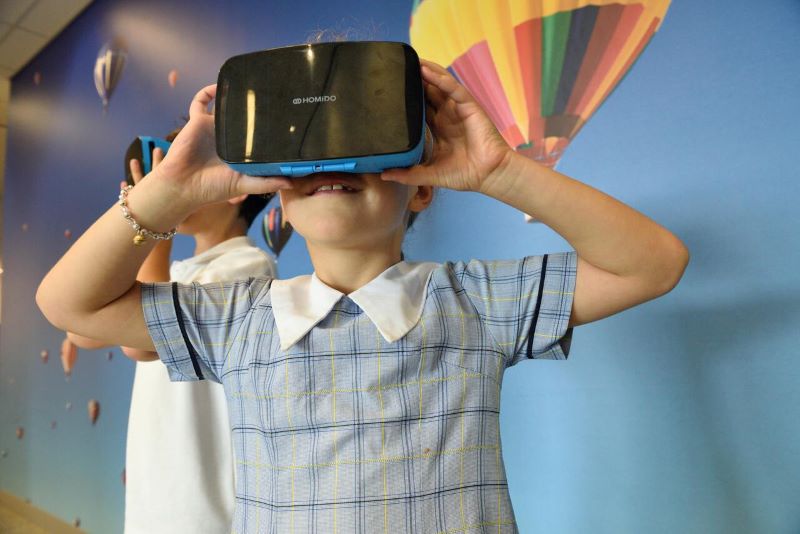
Brief History of Virtual Reality in Education
Virtual reality has been used in various fields since the mid-20th century, but its application in education is relatively recent. In the 1990s, virtual reality started gaining attention in the education industry due to its potential to revolutionize the way students learn. However, at the time, the technology was expensive and inaccessible to most educational institutions.
Over the past few years, advancements in virtual reality technology have made it more affordable and accessible, leading to an increased adoption of virtual reality in education. Today, virtual reality is being used in various educational settings, from K-12 schools to universities and beyond. As the technology continues to evolve and improve, it is expected to become an even more integral part of the modern classroom.
**Benefits of Using Virtual Reality in Education
**
Virtual reality is a powerful tool for enhancing education in a variety of ways. There are many benefits to using this technology in the classroom, including:
- Enhanced engagement: Virtual reality is a highly engaging and interactive technology that can capture students’ attention and help them stay focused on the learning material.
- Immersive learning experiences: Virtual reality can provide students with immersive and realistic learning experiences that are difficult to replicate in the real world, such as exploring ancient civilizations or touring the human body.
- Fostering experiential learning: Virtual reality can enable students to actively participate in their learning by exploring and experimenting in a safe, controlled environment. This type of experiential learning can be especially helpful for STEM subjects, where hands-on experience is often essential.
- Increased retention and understanding: Virtual reality can help students retain information better by providing a more vivid and memorable learning experience. This can be especially helpful for complex or abstract concepts.
- Development of 21st century skills: Virtual reality can help students develop skills that are increasingly important in the 21st century, such as critical thinking, problem-solving, collaboration, and communication. By using virtual reality in the classroom, students can become better prepared for the demands of the modern workforce.
How Does it Work?
While we are aware that virtual reality is a wonderful tool, how does it work? Virtual reality headsets are normally comprised of a pair of thick goggles connected to a computer and equipped with a set of controllers that enable the user to perform actions.
Having said that, there are also advanced headsets that feature eye tracking without the use of controllers, as well as standalone consoles that do not require a connection to a computer. Additionally, there are less expensive headsets in the form of cardboard goggles that link to your phone.
Movement
The enchantment of virtual reality is based on the headset’s capacity to track the user’s head and eye movement and adjust the perspective accordingly. Additionally, headsets can measure your body movement, which enables you to walk within the simulated world.
This 3D tracking capability is not suitable for everyone, as motion sickness can be a side effect of operating these sophisticated pieces of equipment. Fortunately, the controllers may also be used to navigate the surroundings.
Vision
You may be wondering how these basic pairs of goggles are capable of drastically altering your environment. This is accomplished by the creation of a three-dimensional perspective. This works well because stereopsis, the capacity to visualise a three-dimensional shape using visual information from both eyes, is involved. Your right and left eyes see things somewhat differently, and these two perspectives combine to produce the same impact as how we perceive things in daily life.
Two distinct images, one for each eye, are presented on either side of the goggles, and these images are displayed at the ideal distance from your eyes to produce a sense of depth. Because we perceive photographs and smartphone displays as flat visuals, they will never have the same effect as a three-dimensional simulation.
Sound is another critical component of creating a truly immersive experience, which is why no VR headset is complete without the addition of headphones – which are frequently built-in to VR Headsets.
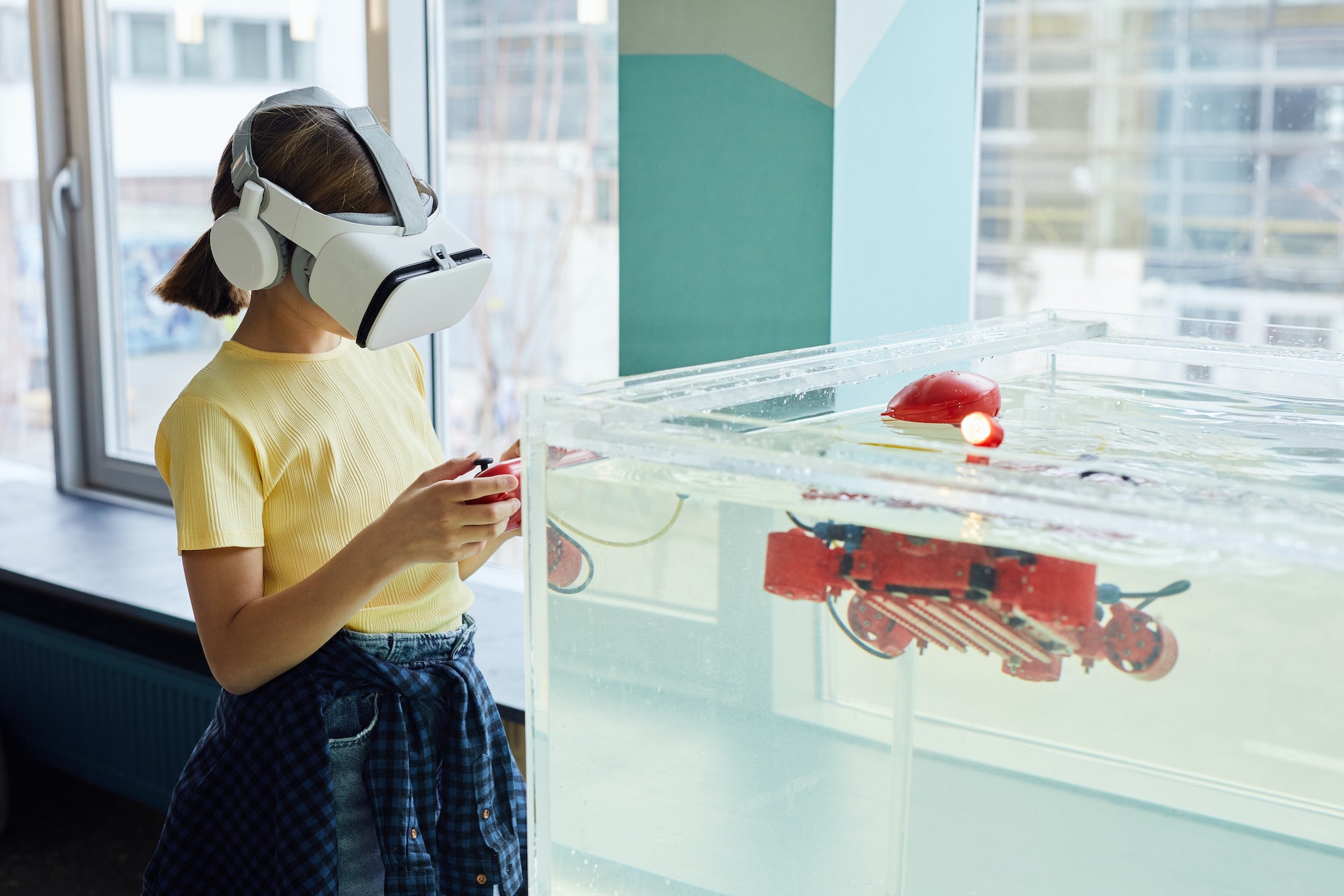
**The Advantages of Using Virtual Reality in Education
**
As mentioned earlier, the use of virtual reality in education has been shown to provide numerous advantages for students.
In this section, I will explore some of these advantages in more detail.
Enhances Student Engagement
One of the biggest advantages of using virtual reality in education is the level of engagement it can provide. Traditional teaching methods often involve passive learning, with students sitting in a classroom and listening to lectures or reading textbooks. Virtual reality, on the other hand, allows students to actively engage with the material and interact with their surroundings. This active learning approach has been shown to increase student engagement and motivation, leading to better learning outcomes.
Provides Immersive Learning Experiences
Virtual reality can also provide immersive learning experiences that are difficult to replicate in a traditional classroom setting. For example, students can explore historical sites or natural environments in 3D, providing a much more realistic and engaging experience than looking at pictures or reading descriptions in a textbook. This type of experiential learning has been shown to lead to better retention and understanding of the material.
Fosters Experiential Learning
Experiential learning is a type of learning that involves hands-on experience and experimentation. Virtual reality can provide an excellent platform for this type of learning, as it allows students to try out different scenarios and see the results of their actions in a safe and controlled environment. This can be particularly useful in fields such as science and engineering, where students can experiment with different variables and see the results in real-time.
Increases Student Retention and Understanding
The immersive and experiential nature of virtual reality learning can also lead to better retention and understanding of the material. Studies have shown that students who learn through virtual reality have better recall of information and a deeper understanding of concepts compared to those who learn through traditional methods.
Develops 21st Century Skills
Finally, the use of virtual reality in education can help develop 21st century skills such as critical thinking, problem-solving, and collaboration. Virtual reality experiences often require students to work together and solve complex problems, which can help prepare them for the challenges they will face in the real world.
The advantages of using virtual reality in education are clear. From increased engagement to better retention and understanding of material, virtual reality has the potential to revolutionize the way we learn.
Education’s Future
Online and remote learning are gaining popularity in this digital age, and many individuals are beginning to see the benefits of an online learning platform. With such dramatic changes occurring, it’s only natural that we leverage technology to maximise the possibilities of a learning environment.
Student Mental Health
Numerous schools, colleges, and institutions have been forced to close as a result of the current wave of lockdowns occurring throughout the world. The epidemic has compelled us to adapt and adjust our approach to education and learning, with blended learning becoming the norm. This form of learning is expected to last beyond the pandemic, as it provides pupils with a more flexible learning approach.
However, one of the most significant difficulties students have encountered is a lack of engagement with one another, and as we all know, being cooped up inside all day does not provide much excitement.
One of the most wonderful aspects of a virtual reality headset is the ability to communicate freely with others, as if they were physically present in the room with you. These chat rooms and social media platforms have the ability to mitigate the decline in social connection among classmates and peers.
These tools are excellent at simulating classrooms and playgrounds, and the sensation of being physically there among classmates is unmatched by video conferencing capabilities.
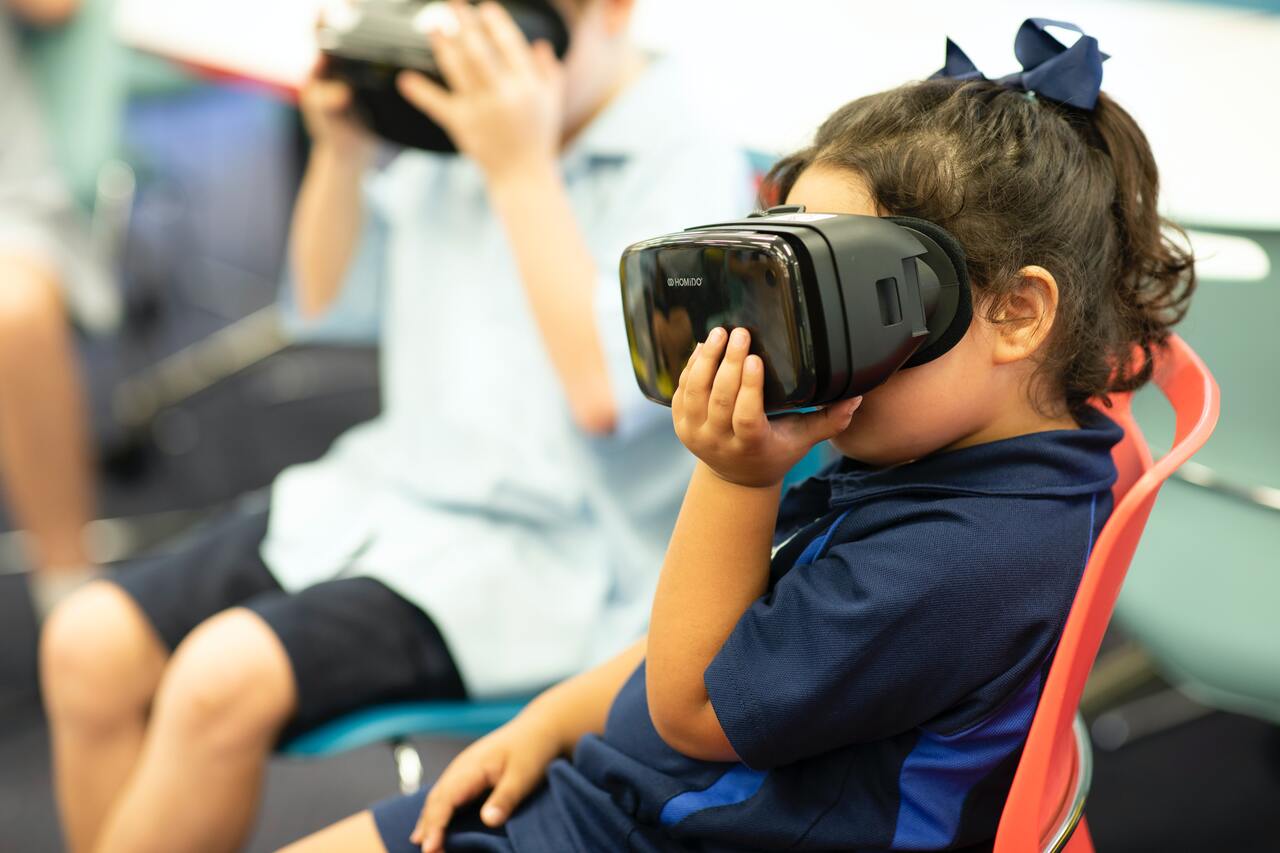
Education Through Virtual Reality
While virtual reality has the potential to transform education, it has not yet been widely adopted in traditional classrooms, most likely due to the high cost of the headsets. With education as a whole moving towards more online environments, virtual reality might be a game-changer in any lesson plan. Virtual reality education makes learning more enjoyable, safe, and engaging than ever before.
Virtual reality education enables students to interact with complicated subjects and settings in ways they would not be able to in the real world, which can benefit a wide variety of courses.
Virtual Reality Applications in the Classroom
Virtual Reality (VR) is a versatile technology that can be used in various fields, including education. It offers an interactive and engaging way for students to learn, explore, and experiment.
Here are some of the most common virtual reality applications in the classroom:
Virtual Field Trips
Virtual field trips are an excellent way for students to experience places that may not be physically accessible. They can visit historical sites, explore different cultures, or observe natural phenomena. VR field trips provide students with a more immersive and interactive learning experience than traditional field trips. They can explore a place in detail, interact with objects, and observe phenomena up close.
Simulations and Lab Experiments
VR simulations and lab experiments offer students an opportunity to practice and experiment in a safe and controlled environment. For example, students can simulate a chemistry lab experiment without the risk of explosions or toxic fumes. They can learn how to operate machinery or equipment without the risk of injury or damage.
Language Learning
VR technology can provide a more engaging and interactive way to learn a new language. Language learners can immerse themselves in a virtual environment where they can practice conversational skills, listen to native speakers, and learn about the culture of the language they are studying.
Arts and Culture Experiences
VR technology can be used to provide students with immersive experiences related to art and culture. For example, students can explore a museum or art gallery, observe art from different angles, and learn about the history and context of the artwork. They can also explore cultural sites and traditions, such as a traditional market or a religious ceremony.
Historical Reenactments
Virtual reality can provide students with a unique way to learn about historical events or places. They can experience history as if they were there, witnessing significant events and interacting with historical figures. They can visit ancient cities, explore historical buildings, and observe cultural practices.
Career Exploration
Virtual reality can provide students with a glimpse of what it’s like to work in different careers. They can explore different job settings and practice job-related tasks in a simulated environment. This can help them make informed decisions about their future career paths.
Virtual reality applications in the classroom offer students an engaging and interactive way to learn and explore. They can help students develop a better understanding of the world around them and improve their learning outcomes.
Best Practices for Integrating Virtual Reality in the Classroom
As with any new technology, there are best practices that should be followed to ensure successful integration and adoption in the classroom.
Here are some key considerations for integrating virtual reality in the classroom:
Identifying Learning Objectives
Before introducing virtual reality, teachers should identify the learning objectives and determine how virtual reality can enhance or support these objectives. It is important to have a clear understanding of what students should learn and how virtual reality can help them achieve these learning goals.
Selecting Appropriate Virtual Reality Content
Teachers should carefully select appropriate virtual reality content that aligns with the learning objectives and the students’ needs. The content should be relevant, age-appropriate, and engaging.
Preparing Students for Virtual Reality Experiences
It is important to prepare students for virtual reality experiences by providing clear instructions, setting expectations, and addressing any concerns or questions they may have. Students should also be educated on how to properly use the equipment to ensure a safe and effective learning experience.
Facilitating Virtual Reality Experiences
During virtual reality experiences, teachers should act as facilitators, guiding students through the experience, asking questions, and encouraging discussion. Teachers should also monitor student behavior to ensure that they are engaging with the content and staying safe.
Debriefing and Reflection
After the virtual reality experience, it is important to debrief and reflect on what students learned and how it relates to the learning objectives. Teachers should encourage students to share their thoughts, ask questions, and provide feedback. This will help students process the experience and ensure that the learning objectives were met.
By following these best practices, teachers can ensure that virtual reality is integrated effectively and meaningfully in the classroom, leading to enhanced student learning outcomes and engagement.
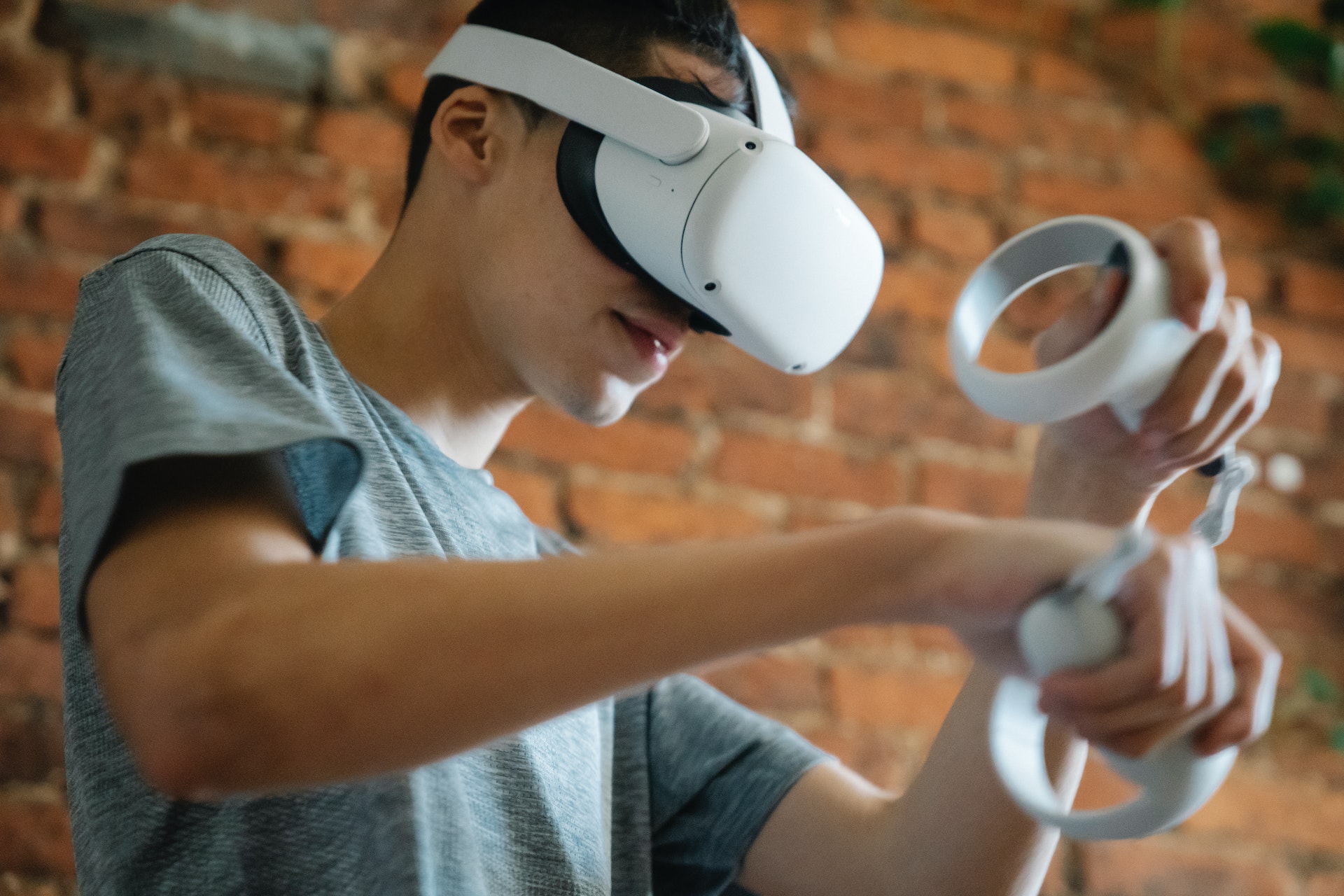
What Disciplines Can Benefit From Virtual Reality?
Geography
Rather of learning about the world through textbooks and movies, VR enables pupils to travel anywhere in the world. Immersion in a culture on the opposite side of our world is enlightening and a far more pleasurable experience.
Have you ever considered travelling back in time to see how things used to be? You can accomplish just that using a virtual reality headset; there is content available that recreates historical places and scenarios, and even allows you to speak with historical characters!
Art
The days of travelling to and paying for admission to a prominent art gallery are over. With virtual reality, you can view some of the world’s most stunning art galleries from any location. Along with the ability to visually visit art galleries, there are some wonderful virtual reality technologies that enable you to make virtual art and express your creativity.
Science
Virtual reality can be used to teach a variety of subjects, but biology and chemistry are excellent examples. There are instructional biology tools that allow you to get up close and personal with a variety of dangerous wild animals, as well as tools that allow you to investigate both human and animal anatomy. Students can also do chemistry experiments in a perfectly safe environment by utilising virtual reality.
These are not the only fields in which virtual reality might be beneficial; the possibilities are limitless! There are numerous resources that can be used in conjunction with lesson plans or for general study.
Future of Virtual Reality in Education
Virtual reality is a rapidly evolving technology that holds tremendous potential for education. As the technology continues to advance, the possibilities for using it in the classroom will only increase. Here are some potential areas for growth and development in the future of virtual reality in education:
Emerging Virtual Reality Technology
As virtual reality technology continues to improve, we can expect to see more immersive and interactive experiences. For example, haptic feedback technology, which allows users to feel and interact with virtual objects, could greatly enhance the realism and engagement of virtual reality experiences. Additionally, advances in eye-tracking technology could allow for more nuanced and personalized virtual reality experiences.
Integration with Other Technologies
Virtual reality technology is not the only technology that holds potential for education. As virtual reality technology continues to evolve, we can expect to see more integration with other technologies, such as artificial intelligence, gamification, and augmented reality. This integration could create even more engaging and personalized learning experiences.
Accessibility and Affordability
One potential drawback of virtual reality technology is that it can be expensive and difficult to access. However, as the technology becomes more widespread, we can expect to see more affordable and accessible virtual reality options. Additionally, advancements in cloud computing and other technologies could make it possible for students to access virtual reality experiences from anywhere, regardless of the hardware they have available.
Potential Impact on Education
As virtual reality technology continues to evolve, it has the potential to greatly impact education. Virtual reality experiences can be used to supplement traditional classroom instruction, allowing students to explore and interact with concepts in a more engaging and immersive way. Additionally, virtual reality could allow for more personalized and self-directed learning experiences, allowing students to explore topics at their own pace and in their own way. Finally, virtual reality could also create new opportunities for collaboration and interaction among students, even in remote or distance learning environments.
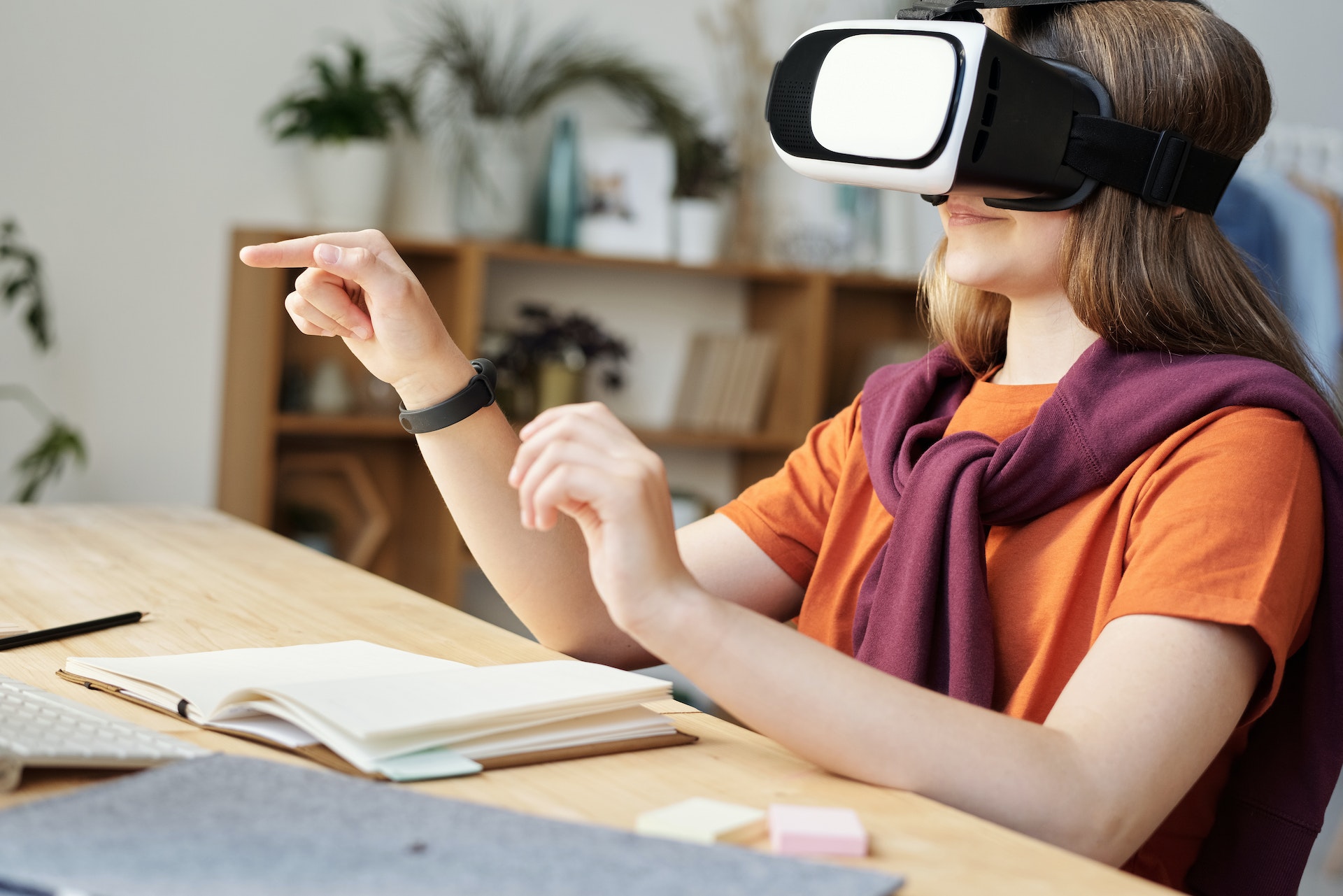
Virtual Reality vs. Other Educational Technologies
Virtual reality is not the only technology that has been used in education. In recent years, other technologies like augmented reality, gamification, and simulation have also become popular. Each of these technologies has its own unique benefits and drawbacks.
Compared to traditional classroom methods, virtual reality can provide more immersive and engaging experiences for students. It also allows for more personalized learning and can be particularly useful in teaching difficult concepts.
Augmented reality, on the other hand, adds digital elements to the real world. This can be useful in a variety of applications, such as allowing students to explore 3D models or providing additional information in real-time. However, augmented reality experiences can sometimes feel less immersive than virtual reality.
Gamification is another technology that has been used in education to increase student engagement and motivation. By adding game-like elements to lessons, teachers can make learning more fun and interactive. However, gamification may not be appropriate for all subjects or students, and it may not always be as effective as other methods.
Simulation is another technology that can provide realistic and interactive experiences for students. It can be particularly useful in fields like medicine, where students can practice surgical procedures in a safe and controlled environment. However, simulations can also be expensive and time-consuming to develop.
In general, each technology has its own advantages and disadvantages. It’s important for educators to carefully consider their learning objectives and choose the technology that best supports those objectives. Additionally, different technologies can be combined and used together to create even more immersive and effective learning experiences.
**Potential Drawbacks or Limitations of Using Virtual Reality in Education
**
While virtual reality has immense potential to transform the way we learn, there are also some drawbacks and limitations that educators must consider before implementing it in the classroom.
Cost and Accessibility
One of the biggest barriers to implementing virtual reality in education is the cost. VR headsets and software can be expensive, making it difficult for schools with limited budgets to invest in this technology. Additionally, not all students have access to the necessary hardware at home, which can create an equity issue.
Technical Difficulties and Maintenance
Virtual reality equipment is complex and requires a high level of technical expertise to set up and maintain. This can be a challenge for schools that do not have dedicated IT staff or resources to support this technology.
Safety Concerns
While virtual reality experiences can be incredibly immersive and engaging, there are also potential safety concerns to consider. For example, students may trip or bump into objects while wearing the headset, which could result in injury.
Possible Distraction or Disengagement
While virtual reality can be an incredibly engaging experience for students, there is also the possibility that it could be a distraction. Teachers need to carefully consider when and how to use virtual reality in the classroom to ensure that it enhances, rather than detracts from, the learning experience.
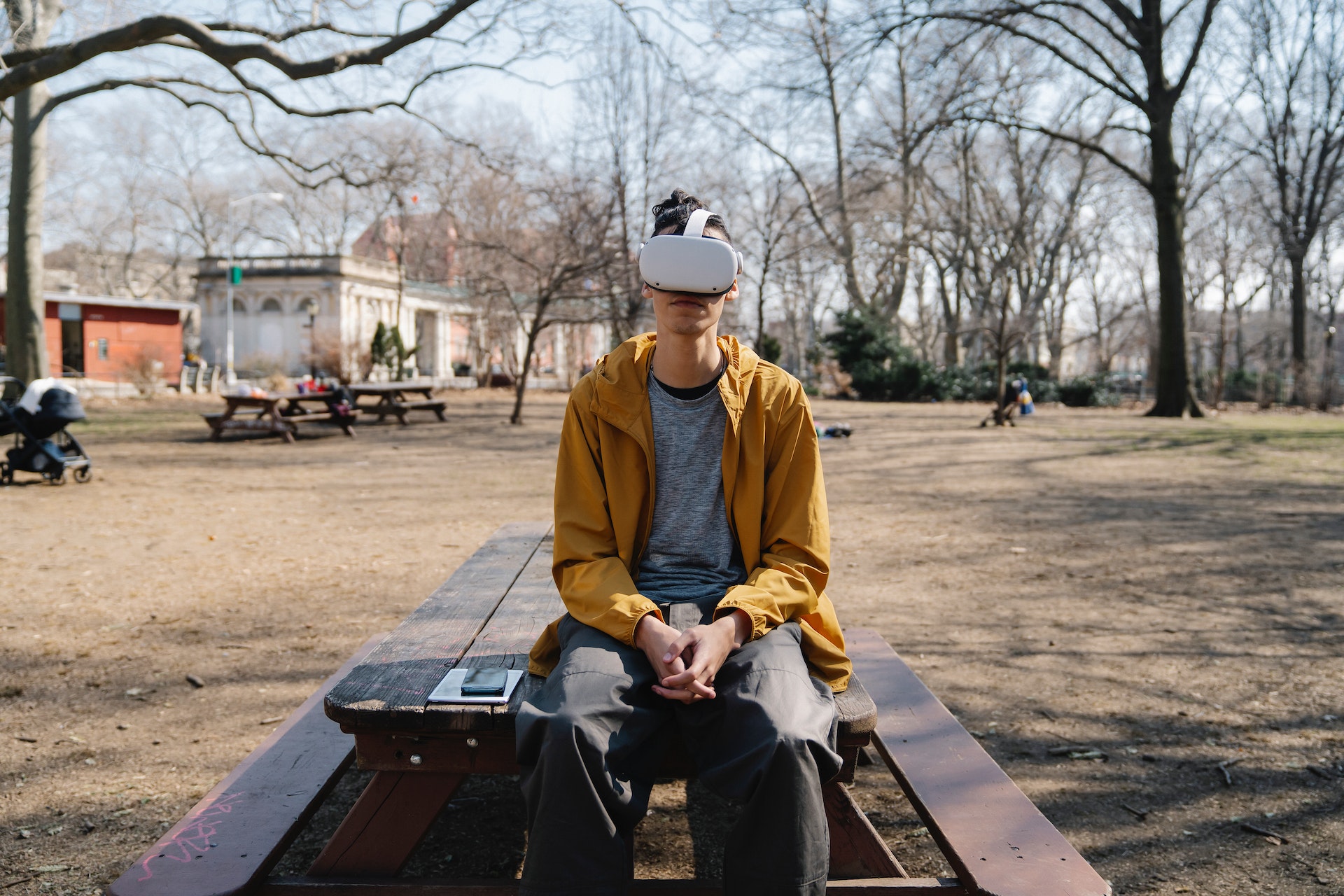
**Ethical Considerations in Using Virtual Reality in Education
**
As with any technology, the use of virtual reality in education raises important ethical considerations that should be taken into account.
Here are some of the key ethical issues related to the use of virtual reality in education:
- Privacy: Virtual reality experiences may collect sensitive information about students, such as their behavior or physiological responses. It is important to ensure that this information is collected and used ethically, with appropriate consent and safeguards in place to protect students’ privacy.
- Inclusivity: Virtual reality experiences may present barriers for students with disabilities or other individual differences, such as sensory or motor impairments. It is important to ensure that virtual reality experiences are designed with inclusivity in mind, and that all students have equal opportunities to participate.
- Representation: Virtual reality experiences may perpetuate stereotypes or biases if they are designed without sufficient consideration for diversity and representation. It is important to ensure that virtual reality experiences are designed to be inclusive and represent a range of perspectives and experiences.
- Safety: Virtual reality experiences may present physical or psychological risks to students, such as motion sickness or disorientation. It is important to ensure that virtual reality experiences are designed with safety in mind, and that appropriate safeguards are in place to protect students from harm.
- Addiction: Virtual reality experiences may be highly engaging and immersive, potentially leading to addictive behavior or excessive screen time. It is important to ensure that virtual reality experiences are used in moderation and balanced with other forms of learning and activities.
By addressing these ethical considerations, educators and developers can ensure that the use of virtual reality in education is safe, inclusive, and beneficial for all students.
**Virtual Reality and Inclusive Education
**
Virtual reality has the potential to make education more inclusive for students with disabilities or those who face accessibility challenges. Traditional classroom activities may not always be accessible to all students, but virtual reality can offer a more immersive and engaging learning experience that accommodates diverse learning styles.
For example, students with physical disabilities who may not be able to participate in a field trip to a science museum can use virtual reality to explore exhibits and engage in hands-on activities. Virtual reality can also provide simulations and visualizations that help students with cognitive disabilities better understand complex concepts.
However, it is important to consider the accessibility of virtual reality technology itself. Students with visual or hearing impairments may not be able to fully engage with certain VR experiences, and some students may experience motion sickness or other discomfort while using VR. Therefore, it is important for educators to consider the needs and abilities of all students when selecting and designing virtual reality experiences.
Additionally, it is crucial to ensure that the use of virtual reality in education does not create further disparities or inequities among students. Schools and educators must provide equal access to virtual reality technology and experiences, regardless of students’ socioeconomic status or background. This may involve providing access to VR headsets or other equipment, or offering virtual reality experiences during class time to ensure that all students have the opportunity to participate.
Case Studies of Virtual Reality in Education
There are several case studies that showcase the potential of virtual reality in education.
- Google Expeditions: Google Expeditions is a platform that allows teachers to take their students on virtual field trips to various parts of the world. With the help of Google Cardboard, students can immerse themselves in a 360-degree environment and explore different cultures, ecosystems, and historical events. The platform has been used in various schools across the world, and students have reported increased engagement and interest in their subjects.
- University of Maryland: The University of Maryland has been using virtual reality to teach anatomy and physiology. With the help of VR headsets, students can explore the human body in 3D, which has proven to be an effective way of learning complex anatomical structures. The university has reported a significant improvement in student performance and retention rates.
- Virtual Speech: Virtual Speech is a platform that uses VR to help individuals overcome public speaking anxiety. The platform creates a simulated environment that mimics real-life scenarios, allowing individuals to practice their public speaking skills in a safe and controlled environment. The platform has been used by various universities and has been shown to improve confidence and reduce anxiety in individuals.
- Science Museum of London: The Science Museum of London has been using virtual reality to teach physics. With the help of VR headsets, students can explore the principles of physics in a simulated environment. The museum has reported increased engagement and interest in the subject, with students being more willing to explore and experiment.
These case studies demonstrate the potential of virtual reality in education, and how it can be used to enhance the learning experience for students.
Impact on Student Learning Outcomes
Virtual reality has been shown to have a positive impact on student learning outcomes in various studies.
For example, a study conducted by the University of Arkansas found that students who learned about geological features using virtual reality technology demonstrated better learning outcomes compared to those who learned using traditional methods. Similarly, a study conducted by researchers at the University of British Columbia found that students who used virtual reality in their science class had better learning outcomes compared to those who used traditional methods.
Virtual reality can also improve student engagement and motivation, as it provides an immersive and interactive learning experience that can be more engaging than traditional methods.
In a study conducted by researchers at Stanford University, students who learned about coral reefs using virtual reality technology showed greater levels of engagement and interest compared to those who learned using traditional methods.
Furthermore, virtual reality can provide students with opportunities to practice and develop skills in a safe and controlled environment. For example, medical students can use virtual reality simulations to practice surgical procedures and emergency scenarios, without putting actual patients at risk.
Teacher and Student Feedback
In addition to the impact on learning outcomes, it is important to consider the feedback of teachers and students who have used virtual reality in the classroom. Many educators report that virtual reality technology helps to engage students and increase their motivation to learn. The immersive nature of virtual reality can also help students to retain information and develop a deeper understanding of complex concepts.
Teachers have also reported that virtual reality can be an effective tool for differentiation, allowing students to explore and learn at their own pace. Additionally, virtual reality can be used to provide students with experiences that would otherwise be impossible or difficult to replicate in the classroom, such as visiting historical sites or exploring the human body in detail.
Students have also reported positive experiences with virtual reality in the classroom. Many find it engaging and exciting, and feel that it helps them to understand complex concepts more easily. Some students have even reported feeling more connected to the material they are learning when using virtual reality.
However, it is important to note that not all students may have access to virtual reality technology outside of the classroom, which could create inequities in their learning experiences. It is also important for teachers to receive adequate training and support in order to effectively integrate virtual reality into their curriculum.
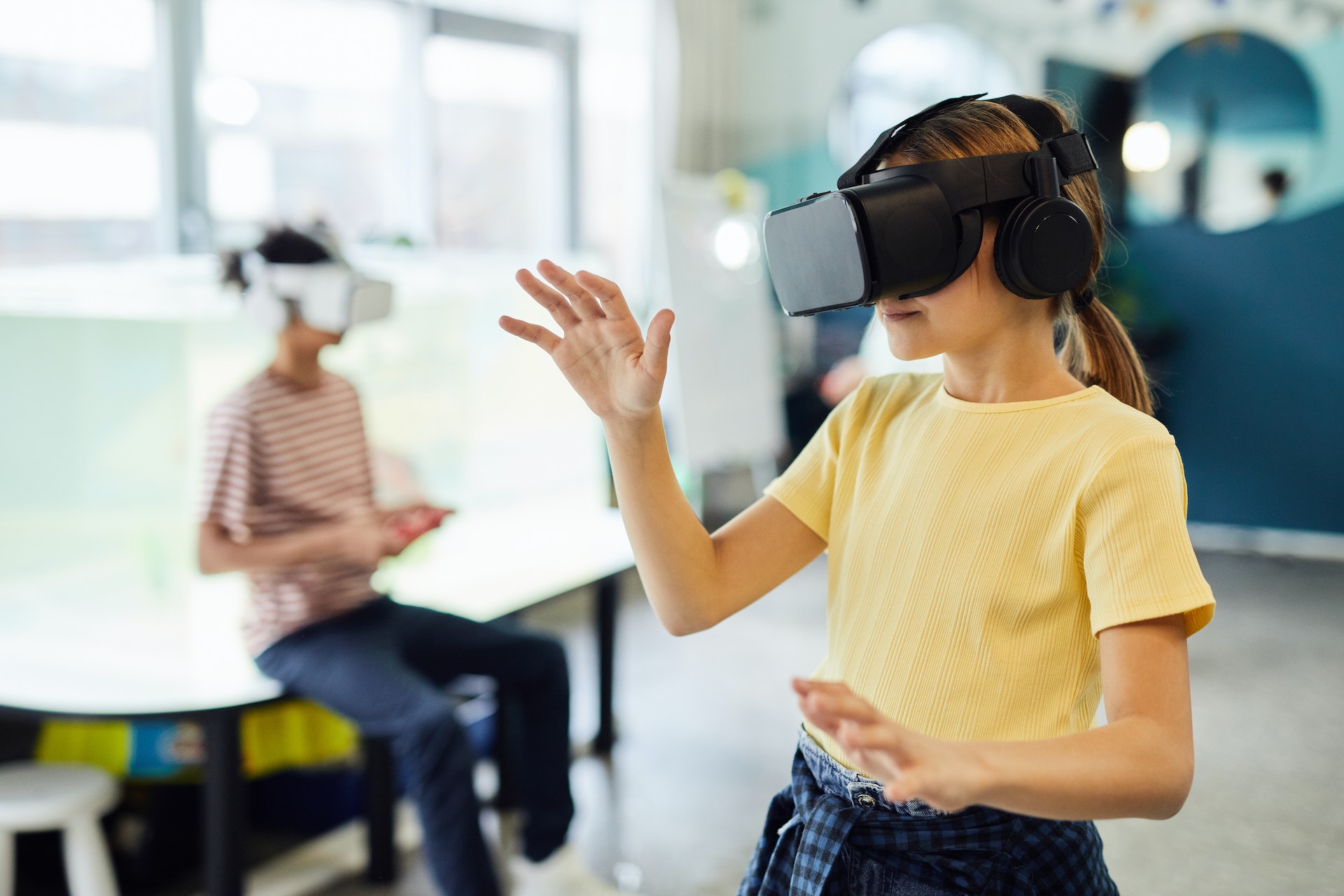
Challenges and Opportunities for Teachers
Virtual reality technology can be a powerful tool for enhancing teaching and learning experiences. However, it also presents some challenges and opportunities for teachers. Here are some examples:
- Professional development: Teachers may require additional training to effectively integrate virtual reality technology into their teaching practice. School districts and educational institutions need to provide teachers with the necessary support and resources to help them effectively use VR technology in the classroom.
- Equipment and cost: Virtual reality technology can be expensive and requires significant investment in hardware and software. This may be a barrier for some schools and teachers who do not have the resources to invest in VR equipment. Moreover, regular maintenance and upkeep of the technology can also be costly.
- Content creation: While there are many existing virtual reality applications available for education, not all of them align with the specific learning objectives of a given lesson or curriculum. Teachers may need to create their own VR content to ensure it meets the needs of their students. This requires a specific skill set that not all teachers may possess.
- Engagement: One of the main benefits of virtual reality is its ability to engage students in the learning process. However, it is important for teachers to ensure that VR experiences are directly linked to learning objectives and are not used solely for entertainment purposes.
- Accessibility and inclusivity: While virtual reality can enhance educational experiences for many students, it may present challenges for others, such as those with sensory impairments. Teachers need to ensure that all students can access and benefit from VR experiences.
Virtual reality presents exciting opportunities for teachers to engage students in immersive learning experiences. However, teachers need to be mindful of the challenges and opportunities associated with the technology to ensure that it is used effectively in the classroom.
Virtual Reality and Parental Involvement
Virtual reality can be a valuable tool in involving parents in their child’s education. With virtual reality, parents can get a better understanding of what their child is learning and experiencing in the classroom. For example, parents can participate in virtual reality field trips with their child’s class, allowing them to see and learn about different places and cultures around the world.
Virtual reality can also provide opportunities for parents to participate in classroom activities and discussions remotely, which can be especially beneficial for parents who are unable to physically attend due to work or other commitments. This can help parents stay engaged in their child’s education and feel more connected to their child’s learning experience.
However, it is important to ensure that parents are aware of the potential benefits and limitations of virtual reality, and that they are properly prepared and informed about how to use the technology to support their child’s learning. Additionally, it is important to ensure that virtual reality activities are accessible and inclusive for all students and families, including those who may not have access to the necessary technology or may have concerns about the use of virtual reality in education.
Benefits and Potential for Parental Involvement in Virtual Reality Experiences
Virtual reality provides an opportunity for parents to be more involved in their children’s education. Parents can explore virtual reality content with their children at home, providing them with an immersive and interactive learning experience. This allows parents to participate in their child’s education and be more engaged in their learning.
Virtual reality can also provide parents with a better understanding of their child’s learning preferences and strengths. By observing their child’s reactions and interactions with the virtual environment, parents can gain insight into their child’s learning style, interests, and strengths. This can help parents to support their child’s learning outside of the classroom and provide them with more targeted support.
Moreover, virtual reality can also facilitate communication between teachers and parents. Teachers can use virtual reality to provide parents with an understanding of what their child is learning and how they are progressing. This can help parents to support their child’s learning at home and to work in partnership with the teacher to ensure that their child is making progress.
In summary, virtual reality provides an opportunity for parents to be more involved in their child’s education, gain a better understanding of their child’s learning preferences and strengths, and facilitate communication between teachers and parents.
Strategies for Involving Parents in Virtual Reality Education
Involving parents in virtual reality education can have a positive impact on students’ learning experiences. Here are some strategies for how teachers can involve parents in virtual reality education:
- Communicate with parents: Teachers can communicate with parents through newsletters, email updates, and parent-teacher conferences about the virtual reality experiences their children are having in the classroom. This can help parents understand the benefits of virtual reality and the impact it is having on their children’s learning.
- Invite parents to participate: Teachers can invite parents to participate in virtual reality experiences alongside their children. This can be done through virtual reality open house events or parent-teacher conferences where parents can experience the same virtual reality activities that their children are doing in class.
- Provide resources for parents: Teachers can provide resources for parents to learn more about virtual reality and its benefits. This can include online resources, books, and articles about virtual reality in education.
- Collaborate with parents: Teachers can collaborate with parents to develop virtual reality experiences that align with the curriculum and address specific learning objectives. This can help parents feel more involved in their children’s education and can also help teachers create more engaging and effective virtual reality experiences.
By involving parents in virtual reality education, teachers can create a more supportive learning environment and improve students’ learning outcomes.
Virtual Reality in Education: All Your Burning Questions Answered
What is virtual reality and how does it work in education?
Virtual reality is a computer-generated simulation of an environment that can be experienced through a headset or other device. In education, it can be used to create immersive learning experiences that enhance student engagement and understanding of concepts.
What are the benefits of using virtual reality in the classroom?
Benefits of using virtual reality in the classroom include increased student engagement, improved understanding of complex concepts, and the ability to provide experiential learning opportunities.
What are some examples of virtual reality applications in education?
Examples of virtual reality applications in education include virtual field trips, science simulations, and historical reenactments.
How can virtual reality enhance student engagement and learning outcomes?
Virtual reality can enhance student engagement and learning outcomes by providing immersive experiences that allow students to explore and interact with complex concepts in a way that is more memorable and impactful.
What are the best practices for using virtual reality in the classroom?
Best practices for using virtual reality in the classroom include proper planning, setting clear learning objectives, and providing adequate support and guidance to students during the experience.
How does virtual reality compare to other forms of educational technology?
Virtual reality offers unique benefits compared to other forms of educational technology, such as its ability to provide immersive, hands-on learning experiences.
What are the potential drawbacks or limitations of using virtual reality in education?
Potential drawbacks or limitations of using virtual reality in education include the cost of equipment and software, potential health concerns, and the need for proper training and support for teachers and students.
How can virtual reality be used to support experiential learning and 21st century skills?
Virtual reality can support experiential learning and 21st century skills by allowing students to explore and interact with real-world scenarios and challenges in a safe and controlled environment.
How can teachers incorporate virtual reality into their lesson plans?
Teachers can incorporate virtual reality into their lesson plans by identifying learning objectives, selecting appropriate content and activities, and providing adequate support and guidance to students.
What does the future of virtual reality in education look like?
The future of virtual reality in education looks promising, with continued advancements in technology and increased adoption by educators and institutions.
Summary and Conclusion
In conclusion, virtual reality has enormous potential to transform the way students learn and engage with educational content. It offers a unique and immersive experience that can enhance understanding and retention of complex concepts, while also providing opportunities for interactive and collaborative learning.
Furthermore, virtual reality can create inclusive learning environments that cater to students with different learning styles and abilities.
While there are certainly challenges and limitations to the use of virtual reality in education, these can be overcome through careful planning, training, and support for teachers and students. In order to fully realize the potential of virtual reality in education, it is important to continue exploring new applications and technologies, and to stay attuned to the needs and concerns of students, parents, and educators.
In summary, virtual reality is a promising tool for improving student learning outcomes and creating more engaging and interactive classroom experiences. As technology continues to evolve, virtual reality will likely play an increasingly important role in education, offering new opportunities for students to learn and explore in ways that were previously impossible. It is up to educators and policymakers to embrace this technology and to work together to ensure that virtual reality is used in a responsible and effective way that benefits all students.
We hope that this article has provided the value of virtual reality tools in a learning setting. Given the current state of the globe, it’s safe to conclude that virtual reality will grow more prevalent in the education sector. It is undoubtedly something that students wish to see more.

